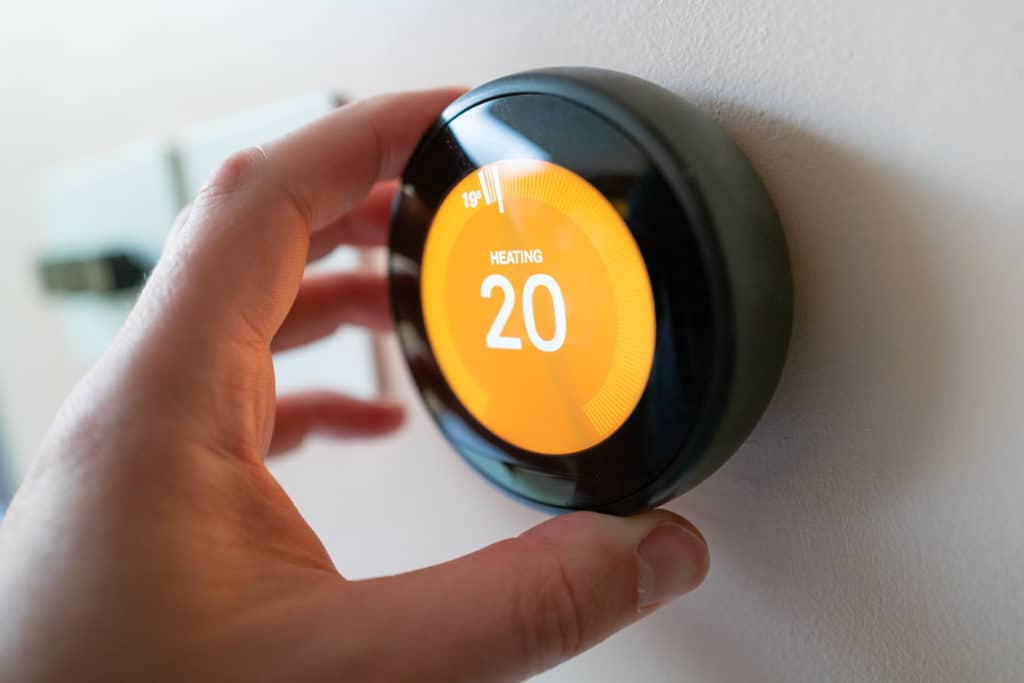A home thermostat is a device that monitors the indoor temperature and automatically adjusts your heating or cooling system to maintain the desired level.
Today’s most advanced thermostats can even adapt settings to fit your lifestyle – without additional programming on your part. For instance, the iComfort® S30 learns household routines (such as sleep and wake times, and when the house is unoccupied) and automatically adjusts settings to save energy and enhance comfort. It also includes an Allergen Defender feature, which monitors the air quality in your area and turns the fan on to clean your home’s air when outdoor levels are high.
A thermostat is a regulating device component which senses the temperature of a physical system and performs actions so that the system’s temperature is maintained near a desired setpoint.
Thermostats are used in any device or system that heats or cools to a setpoint temperature, examples include building heating, central heating, air conditioners, HVAC systems, water heaters, as well as kitchen equipment including ovens and refrigerators and medical and scientific incubators. In scientific literature, these devices are often broadly classified as thermostatically controlled loads (TCLs). Thermostatically controlled loads comprise roughly 50% of the overall electricity demand in the United States.
A thermostat operates as a “closed loop” control device, as it seeks to reduce the error between the desired and measured temperatures. Sometimes a thermostat combines both the sensing and control action elements of a controlled system, such as in an automotive thermostat. The word thermostat is derived from the Greek words θερμός thermos, “hot” and στατός statos, “standing, stationary”.
Thermostats use different types of sensors to measure the temperature. In one form, the mechanical thermostat, a bimetallic strip in the form of a coil directly operates electrical contacts that control the heating or cooling source. Electronic thermostats, instead, use a thermistor or other semiconductor sensor that requires amplification and processing to control the heating or cooling equipment. A thermostat is an example of a “bang-bang controller” as the heating or cooling equipment output is not proportional to the difference between actual temperature and the temperature setpoint. Instead, the heating or cooling equipment runs at full capacity until the set temperature is reached, then shuts off. Increasing the difference between the thermostat setting and the desired temperature therefore does not change the time to achieve the desired temperature. The rate at which the target system temperature can change is determined both by the capacity of the heating or cooling equipment to respectively add or remove heat to or from a target system and the capacity of the target system to store heat.
Dragon Air Services is a family-owned business located in the heart of Plano. We specialize in residential Air Conditioning and Heating repairs, Air Conditioning, and Heating replacements, and Air conditioning and Heating service. Our expert technicians pride themselves on providing honest diagnostics so our customers can make educated decisions on what’s best for them. If you are in need of replacing an HVAC unit in Dallas, Plano or surrounding cities call us today at 214-790-9872 to schedule an appointment.
Here’s the list of services we provide in Plano and Collin County
AC repair
AC Replacement
AC Installation
Heater Repairs
Heater Replacements
Heater Installation
AC and Heater Preventative Maintenance Furnace Repair
Furnace Replacement
Furnace Installation
Duct Replacement
Duct Design

